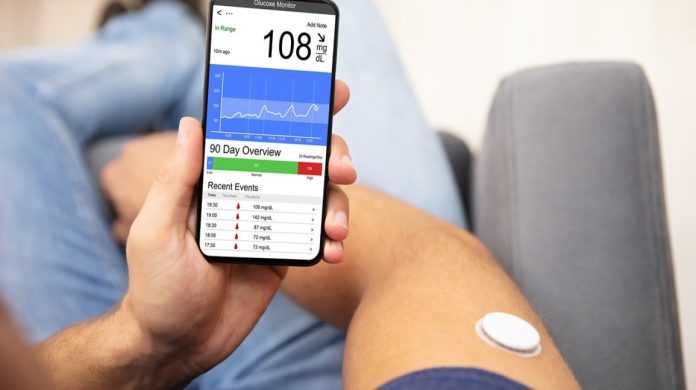Over the years, there has been a surge in the diagnosis of diabetes mellitus. The more people with diabetes, the more burden on the health care system; therefore, a need arises to have a foolproof and efficient method to monitor blood sugars. Also, the diabetics have gotten their fingers sore with constant finger pricking just to get a drop of blood for knowing the glucose levels in the blood.
Necessity is the mother of invention!
People with diabetes must be aware of the phrase continuous
glucose monitoring (CGM).
Daily rituals of prinking finger for glucose monitoring has been a pain for
many, ultimately a reason for non-compliance.
The good news is the revolutionized CGM!
A device has been made available by Abbott called the FreeStyle® Libre, that will soon outdate the traditional finger pricking method of monitoring glucose.

This CGM system has an externally worn device with a sensor, a very tiny one, approximately a tenth of the diameter of the human hair. The device is applied to the back of the upper arm and can provide real-time blood glucose levels for up to 14 days. The readings can be transcribed to the mobile phones or the reader when the user scans the sensor.
How does it record the readings?
When the device is applied to the back of the upper arm, the small, flexible, metal sensor goes just a little beneath the skin, only deep enough to sense the glucose level in the fluid under the skin and to generate an electrical signal, which can then be transmitted to a reader.
The reader can be mobile phones or digital glucose monitors. Users can scan the reading by bringing the reader closer to the sensor that is applied to the arm. A distance of 1 cm to 4 cm is required to scan the recorded readings.

Similar to the scanners at the grocery shops; a barcode on the item of interest is brought closer to the scanner and the price flashes up on the screen. Relatable?
The reader and sensor of FreeStyle® Libre work similarly.
Important pointers:
- The device can remain attached to the arm during shower/baths. The sensor is water-resistant. It can resist up to 1 meter, i.e., 3 feet of water, for no more than 30 minutes.
- Apply the sensor to an arm, at least 2.5 cm (1 inch) away from an insulin injection site.
- Scan the sensor at least once in every 8 hours.
- The scanner should be removed before MRI, CT scan, X-ray, or diathermy treatment.
- This device is not for critically ill patients, pregnant women, patients in shock, dehydrated patients, and patients on dialysis.
- Approved for 18 years and above.
With the advent of this prescription device, patients with diabetes can have their readings whenever they wish, that too painlessly. Moreover, it records data of over 90 days, giving the ease of tracking the glucose levels. This data can then be shared with a healthcare professional who can tailor the management by looking at the trend of glucose levels, as recorded by FreeStyle® Libre.
Having said that, even with the revolutionized CGM, the need to consult a healthcare professional hasn’t been eliminated yet. If the symptoms don’t match the reading, its best to get professional help.
References
(n.d.). Retrieved from https://www.freestylelibre.co.uk/libre/
(2018, July 26). Retrieved from U.S Food and Drug Administration: https://www.fda.gov/medical-devices/recently-approved-devices/freestyle-libre-14-day-flash-glucose-monitoring-system-p160030s017




